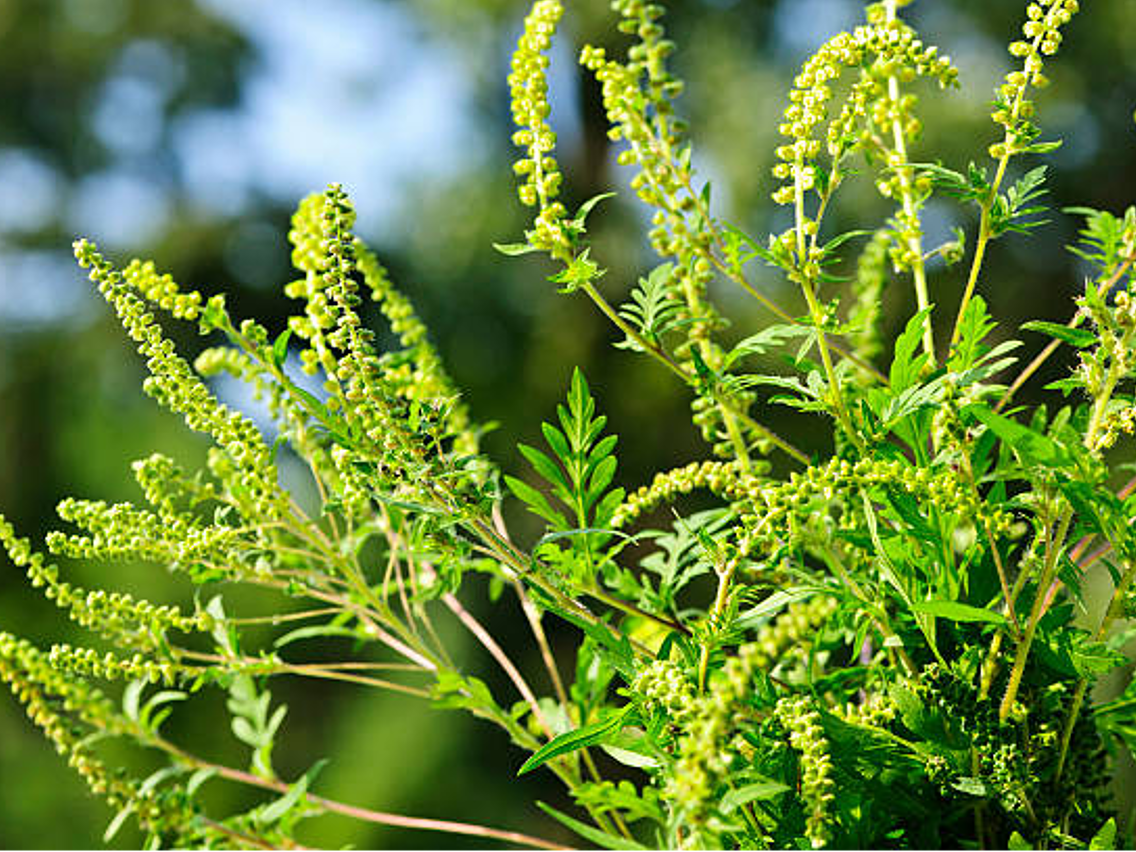Marco - Peruvian Ambrosia

Common Names: Marco, Peruvian Ambrosia, Ambrosia peruviana, Ragweed (Latin: Ambrosia), Southern Ragweed, Peru Ambrosia, Incan Ritual Plant, Peruvian Wormwood
Latin Name: Ambrosia peruviana
Origin: South America, North America
Short Introduction
Marco is easy to grow, requiring almost no significant changes to its environment. Its growth can be stimulated by direct sunlight. Marco blossoms from late spring to early summer.
Detailed Description
Marco is a ritual plant with a long-standing history and promising modern antiparasitic results.
Botanical Information
Marco, or Peruvian Ambrosia (Ambrosia peruviana), is a perennial herb or shrub that blooms annually. Members of this genus are highly variable in size, ranging from just a few centimeters to up to 4 meters tall. The above-ground parts may arise from a rhizome and develop into stems that can be prostrate, climbing, or upright. Leaves can be opposite or scattered, with blades that take various shapes and may be deeply divided (palmate or lance-shaped) into compound forms. The leaf edges are usually smooth and sometimes serrated, with surfaces that may be covered with hairs or glands.
This plant is dioecious, but each individual bears both female and male floral parts. The inflorescence is spike-like, with male flowers displaying stamens surrounded by white to pink petals, while female stigmas are topped with a yellowish cap. Marco is wind-pollinated, and its pollen, which comes in many forms, is widely dispersed—sometimes detected hundreds of kilometers from the nearest coast. Its robust ability to spread allows it to colonize areas from arid lowlands to mountains, and it’s been found even on ships far from land.
Origin and Distribution
Marco is most commonly found in the tropical and subtropical zones of North America and, to a lesser extent, throughout the Caribbean. Wild varieties exist today in countries including Argentina, Belize, Bolivia, Brazil, Chile, Colombia, Ecuador, Mexico, Venezuela, Peru, the USA, and Panama.
The native home of the genus and its most distinct varieties appears to be in the southwestern United States and northwestern Mexico. Some lines have been introduced into Europe, where a few have become naturalized. Marco thrives in a broad range of habitats, from deserts and semi-deserts to grasslands and even urban locations.
In North America, Marco’s pollen is considered problematic, as it can trigger severe allergic reactions—including allergic rhinitis and sinusitis. It is responsible for almost half of all purulent sinus infections in the region.
Usage / Dosage
Incan priests used Marco for religious rituals, such as in the embalming of bodies during funerals and as a treatment for various ailments, especially while traveling. Historically, Marco was also used for symptoms associated with Parkinson’s disease. The plant was first documented by Spanish conquistadors exploring what is now Peru.
Today, Marco remains a key element in both physical and mental cleansing rituals and folk medicine in southern Peru. The plant’s smoke is used as a repellent for insects and as a fumigant disinfectant for rooms. In the local food and beverage industry, Marco is occasionally added to spirits.
When isolated, active substances from Marco have shown cytotoxic properties against various cancer cell types. Notably, sesquiterpenes like plagiochilin A, I, and R, as well as the pseudoguaianolides damsin and confertin, have demonstrated selective in vitro destruction of cancer cells.
Further research has highlighted targeted in vitro activity of these compounds—particularly plagiochilin A, damsin, and confertin—against pathogens responsible for Leishmania amazonensis, Trypanosoma cruzi, and Mycobacterium tuberculosis. This points to activity against diseases such as trypanosomiasis, leishmaniasis, and tuberculosis.
Recent studies suggest Marco’s compounds hold promise for addressing neurodegenerative disorders, with potential applications in Parkinson’s disease, Alzheimer’s disease, and multiple sclerosis in animal models.
Traditional Medicine
In folk remedies, Marco is used to relieve stomach pain, support menstrual comfort, and alleviate joint pain—including early symptoms of rheumatoid arthritis. It is also utilized to manage neurosis, restlessness, anxiety, headaches, and migraine pain.
Marco also serves as a supportive remedy for asthma and nasal congestion. Herbal infusions are used topically for colds, flu, nasal blockage, and coughs. The plant is valued in folk medicine for improving respiratory function, especially in cases of bronchitis and asthma. Decoctions are also used as compresses for rheumatism, headaches, migraines, inflammatory skin conditions, and muscle cramps.
In folk healing, baked Marco leaves or special ointments (sosadas) are used to help treat inflammation and rheumatism. For soothing irritated skin, the fresh juice from Marco leaves is sometimes applied. The juice may also be consumed to ease stomach discomfort or applied to the legs to reduce swelling and to the surface of inflamed skin as an antiseptic.
Restrictions
Concurrent use with other preparations containing ephedrine is contraindicated. Marco is not recommended for pregnant or breastfeeding women, or for children under 3 years of age.
Active Compounds
Ethanol extraction of Ambrosia peruviana has led to the identification of several pharmacologically noteworthy compounds, including three secoaromadendrane-type sesquiterpenes (plagiochilin A, I, and R) and two pseudoguaianolides (damsin and confertin).
Traditional Dosage
Typically, about 1 tablespoon (5–10 g) of dried herb is used per 1 liter of water. The mixture is simmered gently for 5 minutes, strained immediately, and one glass of the resulting decoction is consumed up to 3 times per day. The decoction may also be used for compresses or to treat affected skin.
